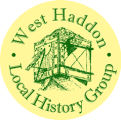Trade and Travel
Travelling around the countryside 300 years ago was difficult, dirty and dangerous. Most roads were little more than wide earthen tracks, with the occasional load of stones or gravel thrown into the worst of the pot-holes. In the winter they were rivers of mud, and in the heat of the summer they were cracked, uneven ribbons of choking dust. Walking or riding on horseback was preferable to a poorly sprung wagon, and this posed problems for moving large quantities of goods. For centuries packman had led strings of packhorses across country to supply coal, salt, hardware and textiles to towns and villages unable to provide their own.
As the manufacture of goods for the market rather than home consumption became more widespread, there were increasing difficulties in transporting the goods to the people who wanted to buy them. By the beginning of the eighteenth century there was a strong public feeling towards improving the state of the roads but who was to pay for it?
The great Turnpike roads came to be built by Turnpike Trustees – bodies of men who took on the improvement of a particular stretchy of road and installed toll bars at intervals along it so that those who wanted to use the road paid for the privilege. Given the decent roads to drive along, coachbuilders and wagon makers soon came up with improvements in vehicles and the beginnings of the industrial revolution were in sight.
The Dunchurch to Northampton stretch of turnpike, passing through West Haddon was improved in about 1740 and the wool trade took off. An abundant supply of local wool, and a situation where the old route from Market Harborough to Banbury crossed the new improved road to Northampton gave the ideal conditions for a predominantly agricultural community to be transformed into a thriving little wool town.
As manufactured goods travelled further and faster, so did the people. But people, unlike lengths of cloth, need rest and refreshment along the way, so it became boom time for inns and alehouses along the route of the Turnpike. Of the village pubs that existed in the eighteenth century, it is the ones along the turnpike that have survived to the present day – The Sheaf and The Crown. There was another turnpike inn in West Haddon, possibly the biggest of three in its day. It was called the Red Lion and was probably on the corner of The Green.
